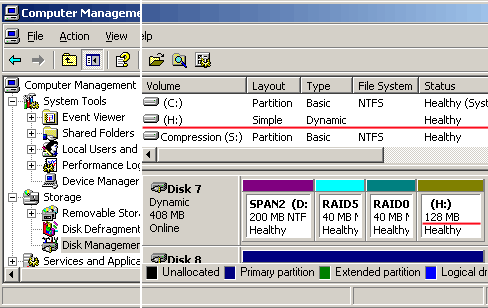To know how to deal with a RAW drive, we need to discuss the basics first.
The filesystem type is recorded at least in two separate places
- In the partition table (MBR, sometimes referred to as a
legacy-style partition) or in the LDM database (when
dynamic disks are used).
- In the volume boot sector.
Three significantly different combinations are thus possible.
- Both partition table and volume boot sector provide consistent
information about the filesystem type. This is how the things are supposed
to be when the volume is online and operational.
- Only one of these places contains proper information, or the information
is contradictory (e.g. partition table lists the volume as NTFS, while the
boot sector indicates it is the FAT32).
- Neither partition table nor volume boot sector contains filesystem type
information (the partition table will in this case indicate the special
filesystem type of zero, i.e. unused volume). This can happen during normal
operation and is pretty legal configuration state. It appears when you
create a volume (e.g. using Disk Management applet) but do not format it at
the same time. You can even assign a drive letter to this unformatted
volume, as illustrated below (notice the underlined "H:" drive which has no
filesystem type defined).

If the volume filesystem type information is unavailable, attempting CHKDSK
against the volume will result in the following message:
The type of the filesystem is RAW.
CHKDSK is not available for RAW drives.
Sometimes, the volume fails in such a way that it becomes RAW. In most cases
the failure will be associated with a sudden reboot (per power failure or the
STOP error). Several causes are possible: partition table, LDM database, or the
volume boot sector corruption, or (on the NTFS volume) when certain records in
both MFT and MFT mirror are damaged beyond easy recognition.